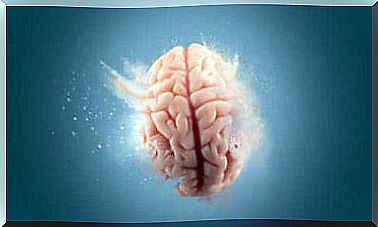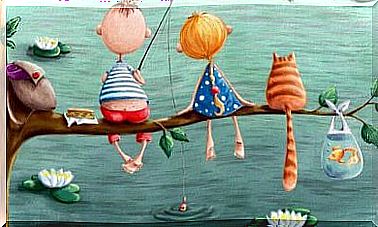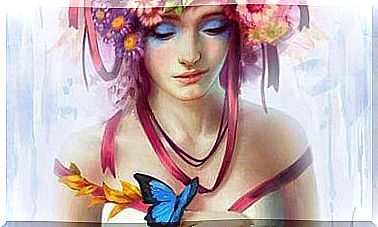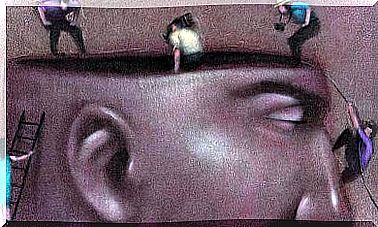Carl Gustav Carus: Psychologist And Romantic Painter
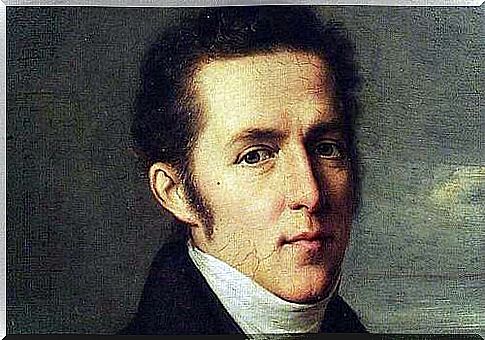
Carl Gustav Carus was a multifaceted figure, capable of mastering various areas, disciplines and fields of knowledge. Born in 1789, he was a doctor, psychologist, biologist, philosopher and painter. He is best known as one of the greatest representatives of German Romanticism and also for having been the predecessor of psychology.
The German city of Dresden honors his legacy with a university and hospital named after him. Even the art world considers him one of the most interesting reference models of the nineteenth century, whose work preserves an artistic beauty comparable to that of Caspar David Friedrich.
Carus was an open-minded intellectual who guided his contemporaries in understanding the human being and the mysteries of nature. He translated everything into painting, with magnificent plays of color. We invite you to discover the life of Carl Gustav Carus.

Carl Gustav Carus: doctor, psychologist and painter of Romanticism
Carl Gustav Carus was a pioneer in various fields of knowledge. Born in Leipzig in 1789, he became interested in the study of science very early on. He graduated in chemistry, physics, botany and later medicine, becoming the first person to lecture in comparative anatomy in 1811.
From an early age, Carus proved to be extremely gifted and, thanks to his comfortable position, he had the best resources available to study. He was taught by the physician and psychological philosopher Ernst Platner. By the age of 21 he had already obtained several university degrees and two doctorates. However, his thirst for knowledge didn’t stop there.
Contributions to Naturphilosophie and biology
Carl Gustav Carus was one of the most important members of Naturphilosophie , a philosophical current that broke away from the more mechanistic lines of science to conceive the natural world in a broader way and, above all, on the basis of an organic conception.
Carus’ most famous contribution to the world of biology was the concept of the “vertebrate archetype”, essential for evolutionary theory. This idea also allowed us to learn more about the morphology of the skull, spine and spine later on.
Carl Gustav Carus and his contribution to psychology: the unconscious
When we speak of the unconscious, it is normal to think of Sigmund Freud almost immediately. Well, it is interesting to know that before the famous neurologist laid the foundations of psychoanalysis and the human psyche, figures like Gustav Carus had already entered this area of knowledge.
We know that around 1813, after falling ill with typhus and having survived almost miraculously, Carus moved to Dresden. Here, thanks to his experience as a surgeon and also as an obstetrician, he became the first personal doctor of the Saxon King Frederick August II.
This allowed him to confront himself with the most eminent figures in the field of medicine, science, philosophy and psychology of his time.
- It was Carus who coined the term “unconsciousness”, creating a philosophical precedent for deep psychology.
- For him, the unconscious had a biological and psychological condition.
- Among his works stands out the book Psyché , in which he states that in order to know the conscious world of the human being, the unconscious must be revealed. This justified the need to develop a science that would allow us to go down to those depths.
- Carl Jung picked up much of the legacy of this German doctor, adopting, for example, the view of the unconscious as something creative that brings us closer to healing. Facing the psychology of the depths was essential for both, because it made possible the recovery of psychic balance, fundamental to reveal the world of dreams.
- Carus proposed a tripartite model of the unconscious which was later taken up by Jung in his analytic theory. This model is the basis of classical concepts such as the collective unconscious, the personal unconscious and the conscious one.

Carl Gustav Carus, the romantic painter
Carl Gustav Carus is considered today the most notable German Romantic painter of the naturalist current. As he progressed in his career as a doctor, surgeon, philosopher and biologist, he devoted more and more time to art. His first exhibition took place at the Academy of the Saxon capital in 1816.
Throughout his life he maintained a close friendship with Caspar David Friedrich, from whom he was inspired to develop most of his classic themes: night landscapes, dark forests, cemeteries, moonlit landscapes, etc.
But his artistic and personal path changed abruptly when he met Johann Wolfgang von Goethe, with whom he shared scientific and naturalistic concerns.
From that point on, Carus’s work became more intimate and symbolic. He explored the more psychological aspects of art, so much so that, at the end of his life, his romantic style was already on the verge of realism. In addition to painting, anatomy drawings also stand out, a prolific legacy for the world of science that demonstrates his qualities as a passionate scientist and scholar.
Carl Gustav Carus is a clear example of an intellectual with a restless mind, open to all disciplines and able to promote the advancement of knowledge in multiple areas at the same time. We owe him great progress in comparative anatomy, psychology and even painting.
